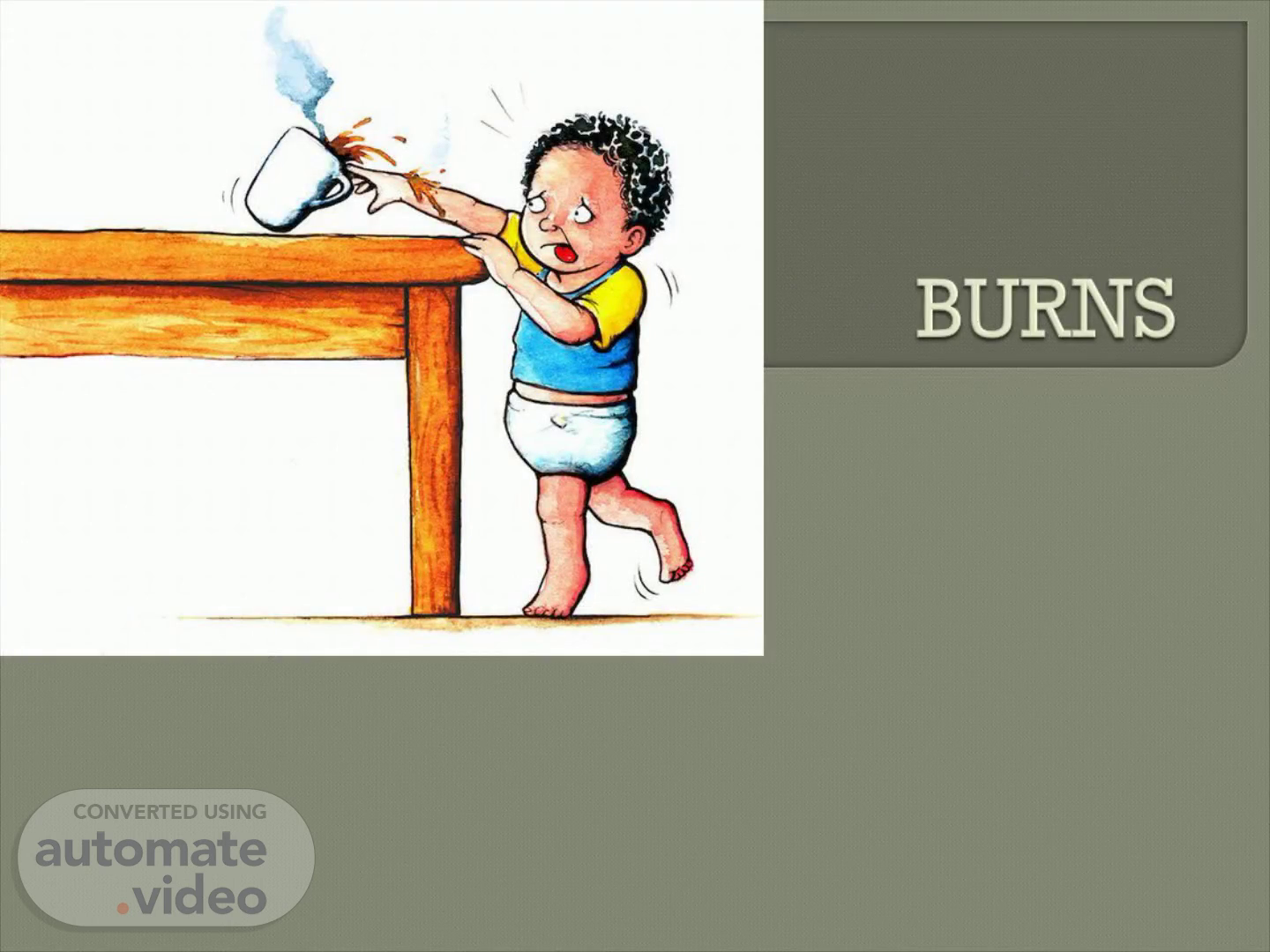Scene 1 (0s)
BURNS. Dr N Raseawelo. Burn Child hot water dispenser Scar Pain, Scattered child cartoon hand painted, watercolor Painting, cartoon Character, painted png | PNGWing.
Scene 2 (22s)
Prevalence and pattern of pediatric burns in a tertiary hospital setting.
Scene 3 (1m 13s)
Backround. Burns remain a global public health problem, causing significant morbidity and mortality It has been reported that burns resulted in 265 000 annual global deaths, and 96% of such deaths occur in low and medium income countries (LMIC).
Scene 4 (2m 0s)
Role of Global burn registry in statistics- developed by WHO and current.
Scene 5 (3m 4s)
Paediatric burns. WHAT age group is more affected?.
Scene 6 (3m 53s)
Research problem. Burns are a burden on the health system, the rate of admission outweighs available beds, especially in developing countries like South Africa The burn cases presenting in tertiary hospitals range between minor burns; requiring outpatient management to major burns resulting in extensive multi - disciplinary management with high costs Some of the patients are refferals from community health centres and district hospitals.
Scene 7 (4m 46s)
continued. What to take not of in the cases presenting in healthcare centres is the limited knowledge of appropriate first aid treatment, to prevent further burn injuries. First aid treatment provided include, water irrigation, application of different substances such as tooth paste and eggs.
Scene 8 (5m 19s)
Continued. . .. Burn related injuries are a major source of disability and mortality. It is therefore crucial to invest time and resources in investigating the epidemiology of burn injuries with the intention of improving understanding of the problem and also proposing preventive and control measures.
Scene 9 (5m 54s)
Aims and objective. Aim of the study To assess the prevalence and pattern of burn injuries in the paediatric group between age of 0-13, presenting in tertiary emergency centre of Kalafong Academic Tertiary Hospital, and its disposition. Primary objective To quantify the prevalence of paediatric burn cases in a tertiary health care centre . To determine the disposition of patient according to mechanism and the extent of burn injury . To reinforce management of minor burn cases in primary health care centres by determining the referral patterns of injuries from other health care centres ..
Scene 10 (6m 39s)
Study design. A retrospective cross sectional study in a single centre setting, the emergency unit at Kalafong Tertiary academic hospital Study population will include analysis of files of patients aged between 0- 13 years who were treated at the emergency unit over a 1 year period ( January 2021 – December 2021).
Scene 11 (7m 6s)
Population selection. Inclusion Criteria Paediatric population , aged between 0-13 All type of burn cases Referral cases from other health care centres Exclusion Criteria Patients with missing files from admin records.
Scene 12 (7m 34s)
Data collection. Data will be collected retrospectively by identifying patients from the Paediatric register in the emergency centre, and then draw the files from Records at Kalafong Academic Hospital. The data that will be of cases seen of period between January and December 2021..
Scene 13 (7m 55s)
Continued. . .. From the records; demographic and descriptive data (Referral facility, Setting of the incident, Type of burns, Extent of burns, Pre-hospital treatment, Disposition, Length of hospital stay (LOHS), Complications and Mortality. Data will be captured using Microsoft excel spreadsheet..
Scene 14 (8m 24s)
Data analysis. Data collected will be analysed using the Statistical Package for Social Sciences (SPSS) software. Data will be reported in the form of graphs, charts and tables in a logical, meaningful and efficient manner. Useful descriptive statistics include mean, standard deviation and frequencies. The Mann-Whitney U test will be used to compare non-normally distributed data between male and female patients..
Scene 15 (8m 54s)
Ethical consideration. The respect of privacy and confidentiality is a crucial ethical standard; issues of access, protection and dissemination of personal information. Anonymity and confidentiality of personal information will be maintained as part of research and participants’ data will not be linked to their identities..
Scene 16 (9m 30s)
The study will seek to add more knowledge on the epidemiology of paediatric burns in Africa..
Scene 17 (9m 41s)
Refferences. WHO. Burns [Internet]. [Updated 2018 March 6 th ]. Cited 2022 March 5 th . Available from https:// www.who.int/news-room/fact-sheets/detail/burns Puthumana JS, Ngaage LM, Borrelli MR, Rada EM, Caffrey J, Rasko Y. Risk factors for cooking-related burn injuries in children, WHO Global Burn Registry. Bull World Health Organ. 2021 Jun 1;99(6): 439-445 Forbinake , N.A., Dongmo , G., Ohandza , C.S., Chichom-Mefire , A., Fokam , P and Beyiha , G. (2019). Epidemiologic and clinical profile of burns in a tertiary hospital in Sub-Saharan Africa. Burns Open, 4(0):22-27. Olawoye , O.A., Iyun , A.O., Ademola , S.A., Michael, A.I and Oluwatosin , O.M. Demographic characteristics and prognostic indicators of childhood burn in a developing country. Burns, 40(0):1794-1798..
